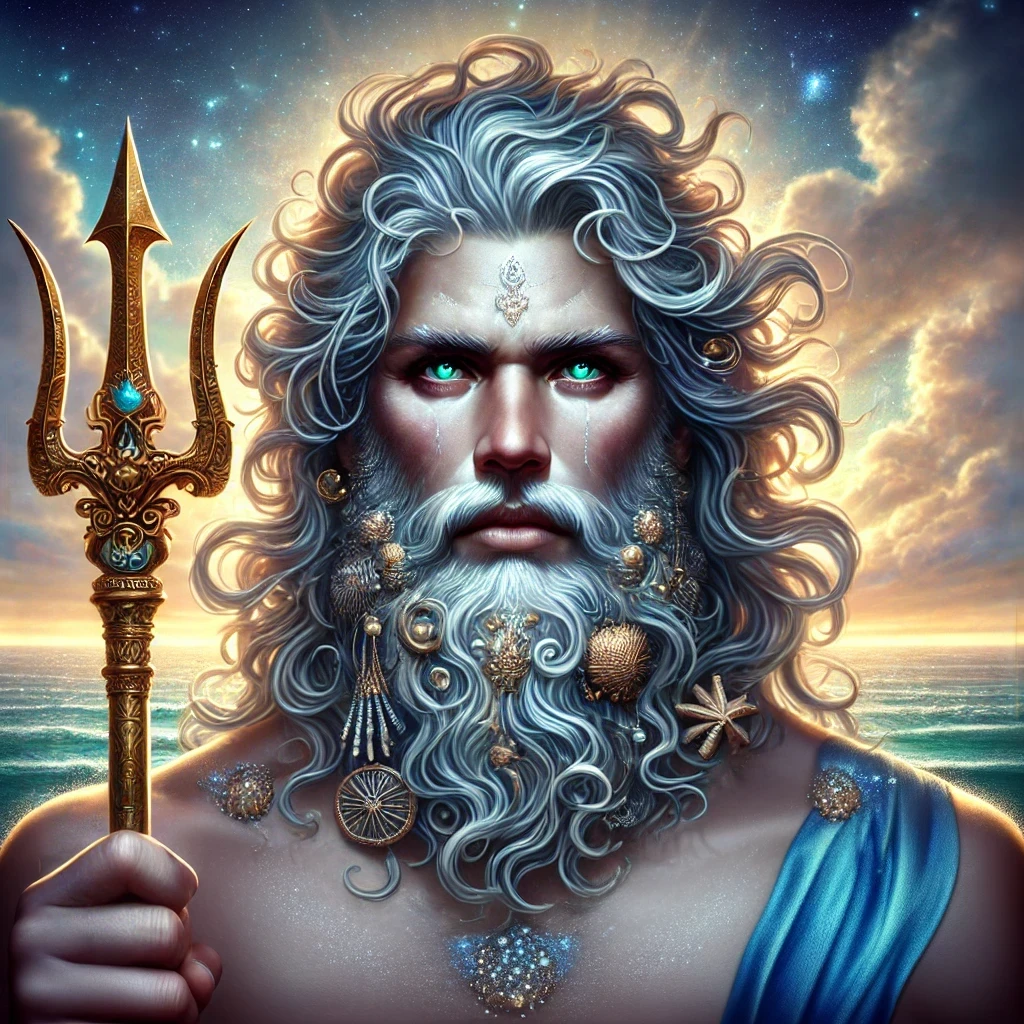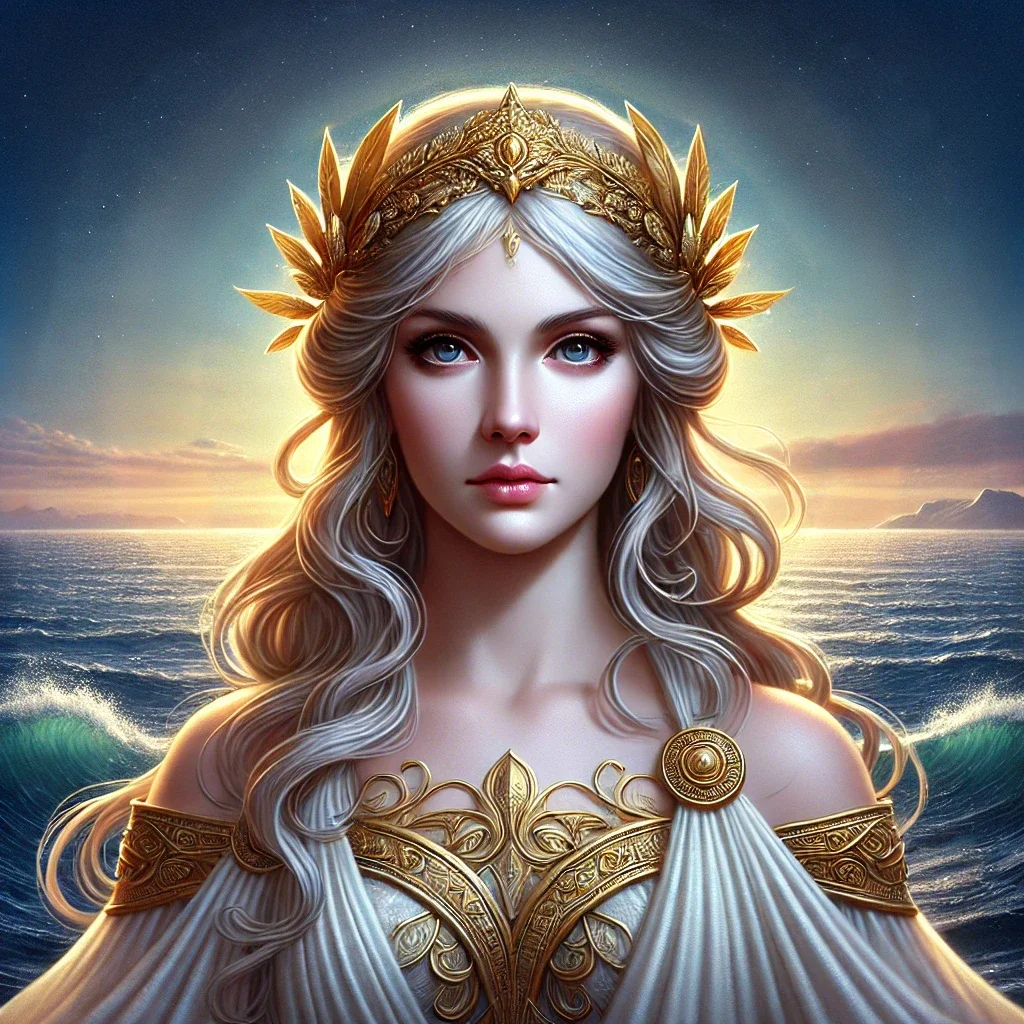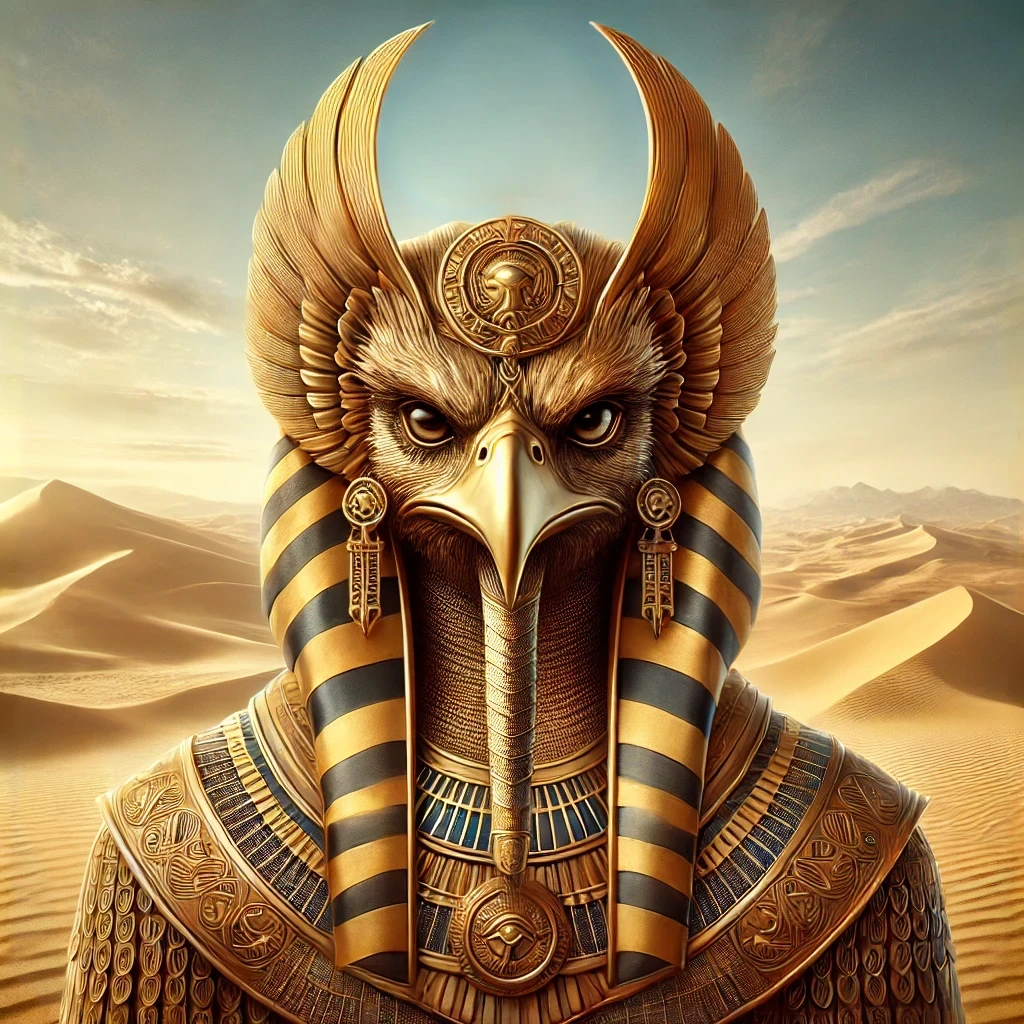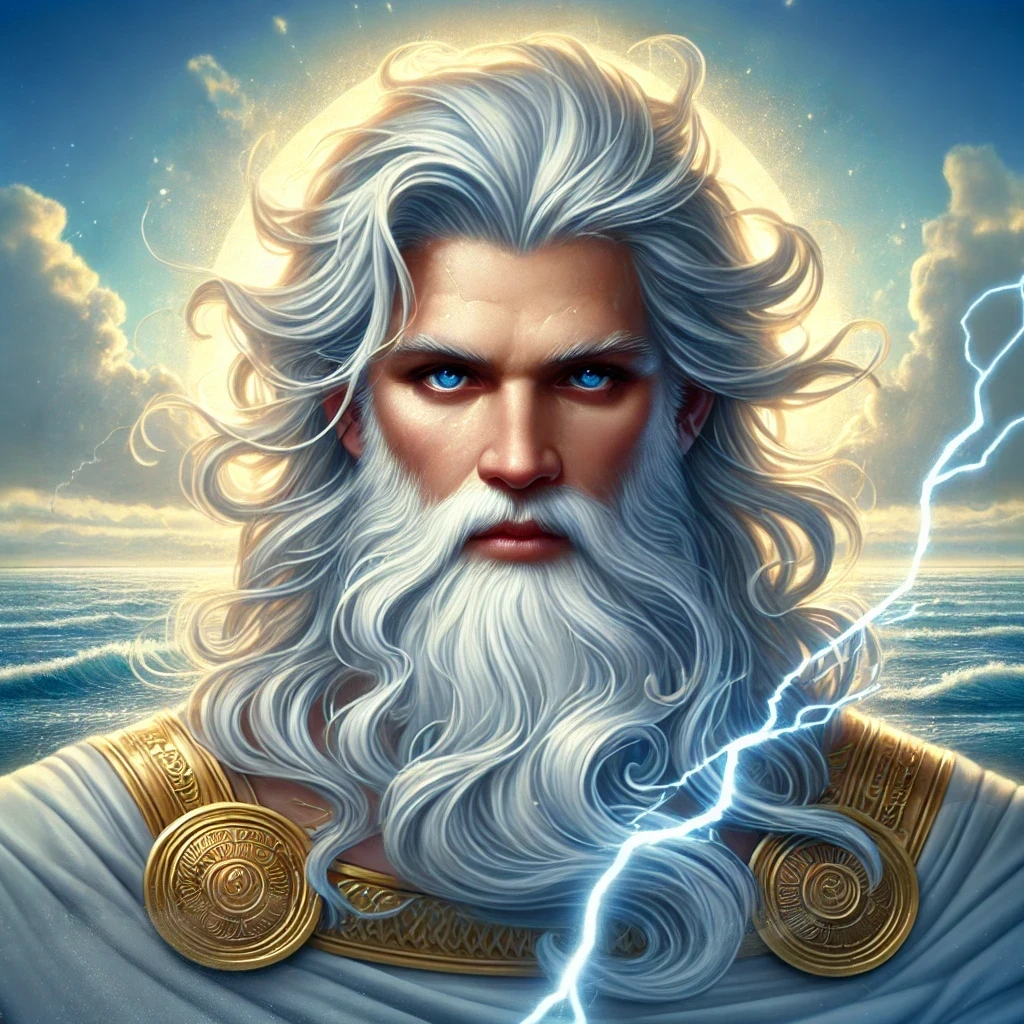Poseidon, one of the twelve Olympian deities in ancient Greek mythology, stands as a central figure in the pantheon. Known as the god of the sea, earthquakes, and horses, Poseidon’s influence extended far beyond the waves. He played a crucial role in Greek religion and mythology, representing both the life-giving and destructive powers of nature. This article delves into his historical and cultural origins, myths, symbols, and worship practices, offering a comprehensive look at this iconic deity.
Historical & Cultural Background
Poseidon’s origins trace back to Mycenaean Greece, where he was venerated as a powerful figure associated with water and the natural world. In Linear B tablets, his name appears as “Poseidaon,” suggesting that his worship predated the classical Greek era.
From Mycenaean Roots to Classical Greece
During the Mycenaean period (circa 1600–1100 BCE), Poseidon’s role was likely more encompassing, possibly including aspects of fertility and weather control. By the time of Homer and Hesiod (8th century BCE), Poseidon’s identity as the god of the sea solidified. As Greek colonists spread across the Mediterranean, Poseidon’s worship expanded, particularly in coastal regions where sailors and fishermen depended on his favor.
Regional Variations
In different parts of Greece, Poseidon took on local attributes. In Corinth, for example, he was celebrated with grand Isthmian Games, while in Arcadia, he was linked to inland springs and rivers. His role adapted to the needs and geography of his worshippers.
Myths & Legends
Poseidon’s myths are among the most captivating in Greek mythology, reflecting his complex personality and immense power.
The Contest with Athena
One of the most famous myths involving Poseidon is his contest with Athena for the patronage of Athens. To win the city’s favor, Poseidon struck the Acropolis with his trident, creating a saltwater spring or a horse (accounts vary). Athena, however, offered an olive tree, symbolizing peace and prosperity, and was ultimately chosen by the citizens.
The Wrath of Poseidon
Poseidon was notorious for his volatile temper. In the tale of Odysseus, Poseidon’s wrath prolonged the hero’s journey home after the Trojan War. This stemmed from Odysseus’ blinding of the Cyclops Polyphemus, one of Poseidon’s sons.
Creation of Horses
According to myth, Poseidon created the first horse, demonstrating his mastery over both land and sea. This act symbolized his connection to strength, speed, and nobility.
Symbolism
Poseidon’s symbols capture his dominion over the natural world and his multifaceted nature.
The Trident
The trident, Poseidon’s iconic weapon, symbolizes his authority over the sea. With it, he could stir storms, calm waters, and shatter rocks.
The Horse
As the creator of horses, Poseidon is often associated with their power and grace. Horses also served as a metaphor for the waves of the ocean, reinforcing his maritime ties.
Associated Objects, Animals, or Plants
Sacred Animals
- Horses: Poseidon’s creation of horses linked him indelibly to these majestic creatures.
- Dolphins: Often depicted in his company, dolphins symbolize the harmony of the sea.
Plants
- Pine Trees: Sometimes linked to Poseidon, pine trees were used in shipbuilding, reflecting his connection to maritime life.
Powers and Attributes
Poseidon wielded immense power, both in mythology and in the natural world.
Mastery of the Sea
Poseidon controlled all aquatic realms, commanding storms, waves, and sea creatures. Sailors and fishermen often prayed to him for safe passage.
Earth-Shaker
As the god of earthquakes, Poseidon was feared for his ability to unleash devastating tremors. This epithet, “Ennosigaios” (Earth-Shaker), highlights his role in shaping the land.
Creator and Destroyer
Poseidon embodied dual aspects of creation and destruction. While he could raise islands and bring forth springs, he could also unleash tempests and floods.
Worship Practices & Rituals
Poseidon’s worship was widespread, with diverse practices reflecting his varied roles.
Temples and Sacred Sites
- Temple of Poseidon at Sounion: Overlooking the Aegean Sea, this grand temple was a site for sailors to honor Poseidon before voyages.
- Isthmus of Corinth: Home to the Isthmian Games, held in Poseidon’s honor, featuring athletic and musical competitions.
Rites and Offerings
Sacrifices, often involving bulls or horses, were common in Poseidon’s worship. Libations of water or wine were also poured into the sea as offerings.
Connections to Other Deities
Poseidon’s relationships within the Greek pantheon were intricate and sometimes contentious.
Siblings
As a son of Cronus and Rhea, Poseidon was the brother of Zeus, Hades, Hera, Demeter, and Hestia. Together, they divided the cosmos, with Poseidon claiming the sea.
Rivalries and Alliances
Poseidon frequently clashed with other gods, notably Athena, Hera, and Apollo. However, he also collaborated with Zeus in maintaining the balance of the cosmos.
Interesting Facts & Curiosities
- Poseidon’s Roman equivalent is Neptune, who shares many attributes but has distinct worship practices.
- In art, Poseidon is often depicted riding a chariot pulled by hippocampi, mythical sea horses.
- The Isthmian Games rivaled the Olympics in popularity and were dedicated to Poseidon.
- Ancient Greek sailors carried small tridents as talismans for protection at sea.
- Poseidon fathered numerous children, including Theseus, Triton, and Polyphemus.
- He played a role in the founding myths of many cities, not just Athens.
- Earthquakes were often attributed to Poseidon’s anger, reinforcing his fearsome reputation.
- The Cretan bull, linked to the myth of the Minotaur, was a gift from Poseidon.
- Poseidon’s name likely derives from a root meaning “lord” or “husband,” emphasizing his authority.



